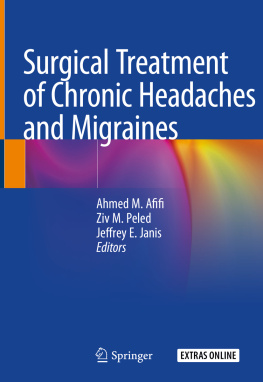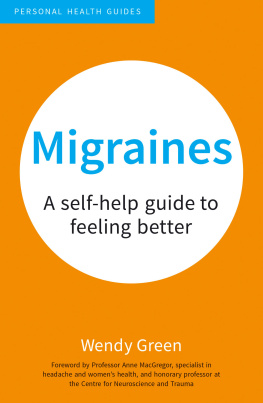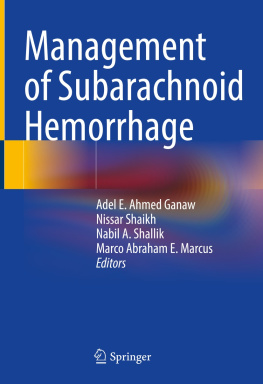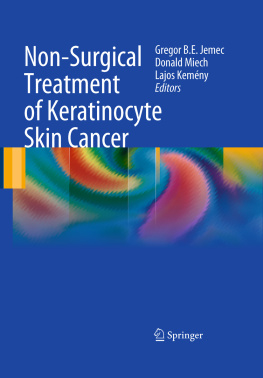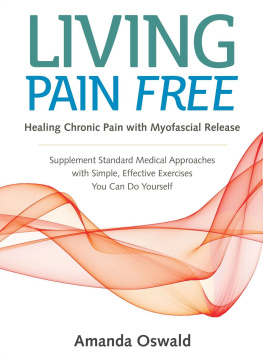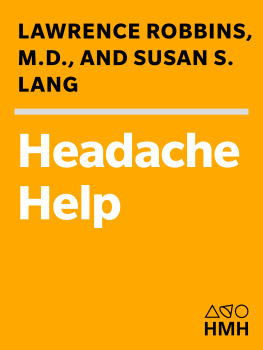Ahmed M. Afifi - Surgical Treatment of Chronic Headaches and Migraines
Here you can read online Ahmed M. Afifi - Surgical Treatment of Chronic Headaches and Migraines full text of the book (entire story) in english for free. Download pdf and epub, get meaning, cover and reviews about this ebook. year: 2020, publisher: Springer International Publishing, genre: Romance novel. Description of the work, (preface) as well as reviews are available. Best literature library LitArk.com created for fans of good reading and offers a wide selection of genres:
Romance novel
Science fiction
Adventure
Detective
Science
History
Home and family
Prose
Art
Politics
Computer
Non-fiction
Religion
Business
Children
Humor
Choose a favorite category and find really read worthwhile books. Enjoy immersion in the world of imagination, feel the emotions of the characters or learn something new for yourself, make an fascinating discovery.
- Book:Surgical Treatment of Chronic Headaches and Migraines
- Author:
- Publisher:Springer International Publishing
- Genre:
- Year:2020
- Rating:4 / 5
- Favourites:Add to favourites
- Your mark:
- 80
- 1
- 2
- 3
- 4
- 5
Surgical Treatment of Chronic Headaches and Migraines: summary, description and annotation
We offer to read an annotation, description, summary or preface (depends on what the author of the book "Surgical Treatment of Chronic Headaches and Migraines" wrote himself). If you haven't found the necessary information about the book — write in the comments, we will try to find it.
Surgical Treatment of Chronic Headaches and Migraines — read online for free the complete book (whole text) full work
Below is the text of the book, divided by pages. System saving the place of the last page read, allows you to conveniently read the book "Surgical Treatment of Chronic Headaches and Migraines" online for free, without having to search again every time where you left off. Put a bookmark, and you can go to the page where you finished reading at any time.
Font size:
Interval:
Bookmark:
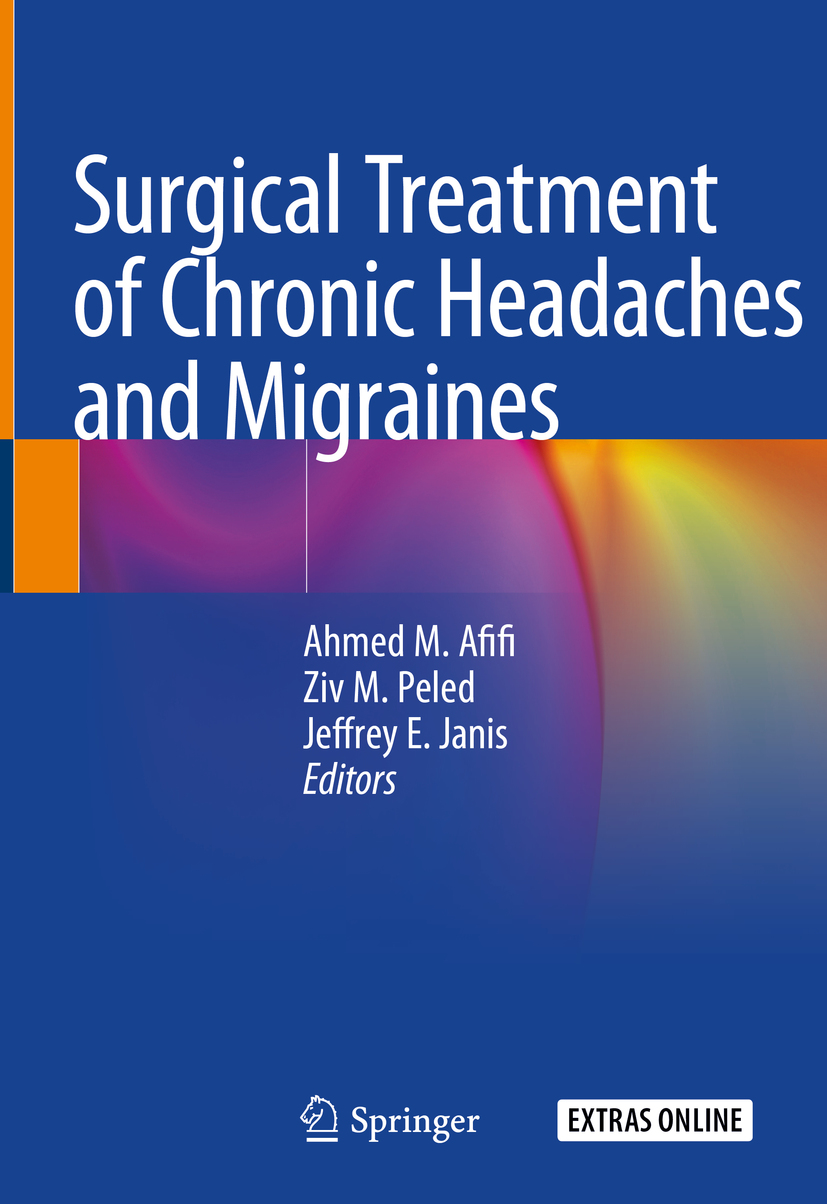

This Springer imprint is published by the registered company Springer Nature Switzerland AG
The registered company address is: Gewerbestrasse 11, 6330 Cham, Switzerland
To my patients, residents, colleagues, and staff at the University of Wisconsin, this book is possible because you all contributed to it.
To my mentors in Madison, Cleveland, Pittsburgh, and Cairo, for believing in me and being the role models that you are.
To my wife, Iman, for your unconditional dedication, love, and support.
And to our kids, Mariam, Sara, and Omar, you are the greatest source of joy and motivation, and I am looking forward to many more miles traveled, giggles shared, and tournaments conquered.
Ahmed M. Afifi
To my mentors and colleagues for their wisdom, patience, teaching, and experience.
To my parents who taught me the value of hard work, perseverance, and drive.
To my children, Simon, Charlotte, and Eveline, who are a daily source of light and joy.
To my wife Anne, the love of my life, who fills more buckets than anyone and shares my hopes and dreams as her own.
I am grateful for and love you all more than you know. This book doesnt exist without you.
Ziv M. Peled
To my wonderful wife, Emily, for her unwavering love, support, patience, and understanding.
To our phenomenal children, Jackson, Brinkley, and Holden, who are the source of my inspiration, and whose smiles and joy make the sun rise every day.
To my patients, whom I serve gladly and to the best of my ability in the never-ending quest to improve their quality of life.
To my friends, colleagues, teachers, and mentors, who have guided and supported me every step of the way. I am eternally grateful.
Jeffrey E. Janis
Listening to patients and learning from their observations led me to research and describe the contemporary surgical techniques for the treatment of chronic headaches going back to late 1999. The investigations to prove the concept and improve the results have continued over the past 20 years. The evolution of this field has been the most exhilarating aspect of my professional career. Sharing the information I have gleaned with others throughout the world and developing a whole new subspecialty of plastic surgery where surgical talents can be applied to eliminate dreadfully painful condition have become the most fulfilling part of my life.
For those who do not suffer from migraine headaches, understanding the magnitude of what these patients endure is difficult. Even minor headaches can ruin an entire day. Those who writhe at the insignificant, yet annoying, ache can appreciate the enormity of what these patients who have chronic, daily migraine headaches tolerate. Those of us who care for these people repeatedly hear from them that we are their last resort, and should we fail to help them, they prefer not to continue living. The role of the plastic surgeon in eliminating deformities to render affected individuals presentable to society, help them enjoy their lives, and be accepted by their peers has been recognized to some degree. However, prevailing opinions about plastic surgeons are that they deal mostly with vain and frivolous concerns. Elimination of pain through peripheral nerve surgery has not been acknowledged by the lay public to the degree that it should. I am hopeful that by propagating information about migraine/headache surgery, the public will become more aware of how great an impact plastic surgeons can make in altering the quality of life of so many patients.
It is remarkably gratifying to see so many younger colleagues enthusiastically embrace this surgical field. They are not only eager to learn and implement these headache operations but seem to be emboldened with a sincere desire to improve the lives of so many. The growing number of surgeons keen to distribute their personal knowledge and experience through this book and previously published books is a resolute testimony to the efficacy of the operations described herein, despite initial disbelief among some of our other medical colleagues. Over the years, collectively, we have offered enough evidence for those skeptics to become convinced that our success neither is a placebo effect nor is it transient. We now have patients who have been followed for close to 18 years with no migraine symptoms and no chronic headaches. There are very few surgical procedures that have been scrutinized through rigorous studies including a retrospective analysis, prospective pilot study, prospective randomized trial with comprehensive inclusion of different trigger sites, and prospective, randomized study with sham surgery and 5-year follow-up. Through basic science studies involving plastic surgery, neurobiology, and proteomics departments at Case Western Reserve University, we have also demonstrated structural pathology in the peripheral nerves of migraine patients compared with asymptomatic patients. Similarly, recent discoveries from the neurology literature strengthen these findings. Collectively, these results form the foundation for the peripheral concept of chronic headaches, which is now being revisited by some open-minded neurologists.
While initial skepticism could have dissuaded us from our efforts, a firm belief in the validity of the peripheral concept, steadfast determination, and unwavering commitment, fueled by continual positive outcomes, had led to the development of multiple procedures that reduce or eliminate migraine headache pain. We will continue this work and hope that by publishing this text, we can entice more surgeons to incorporate this surgical technique into their practice, with the aim of helping more and more patients, both nationally and internationally.
Font size:
Interval:
Bookmark:
Similar books «Surgical Treatment of Chronic Headaches and Migraines»
Look at similar books to Surgical Treatment of Chronic Headaches and Migraines. We have selected literature similar in name and meaning in the hope of providing readers with more options to find new, interesting, not yet read works.
Discussion, reviews of the book Surgical Treatment of Chronic Headaches and Migraines and just readers' own opinions. Leave your comments, write what you think about the work, its meaning or the main characters. Specify what exactly you liked and what you didn't like, and why you think so.

